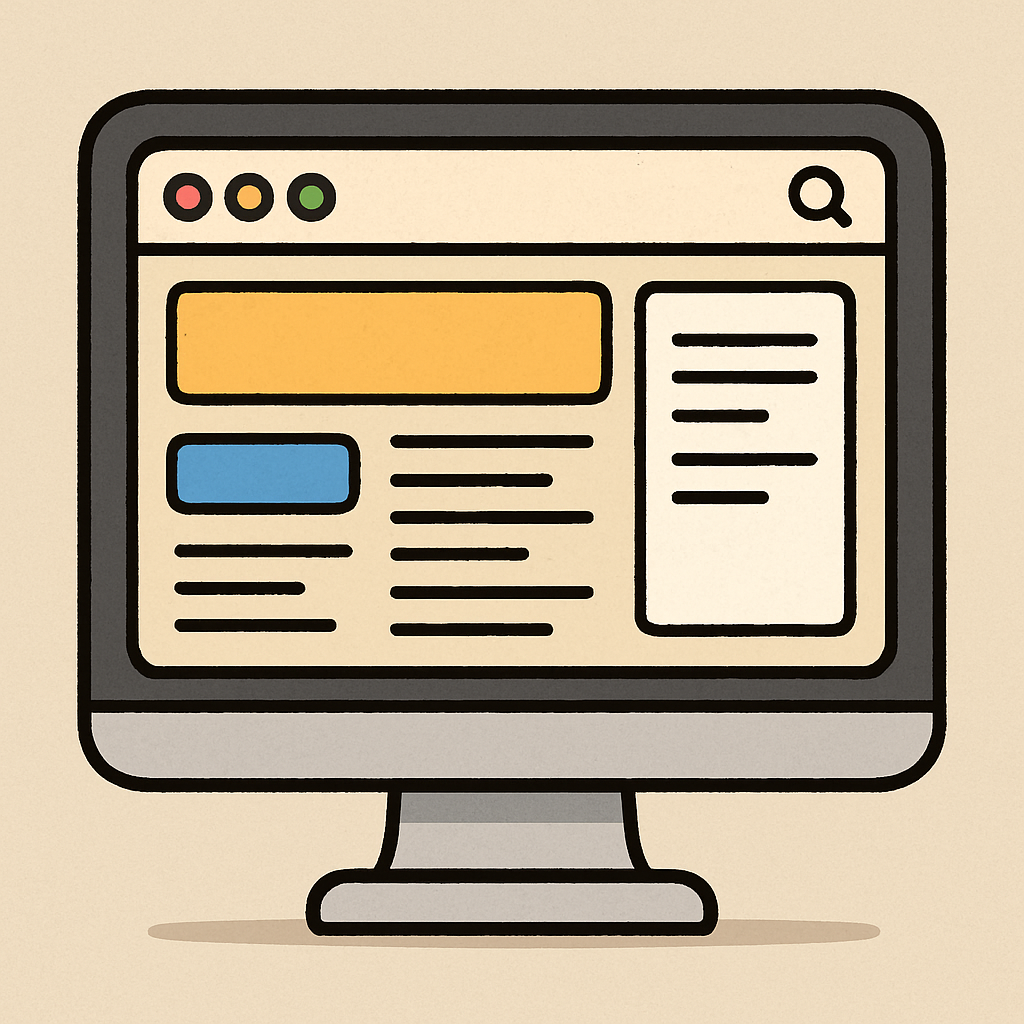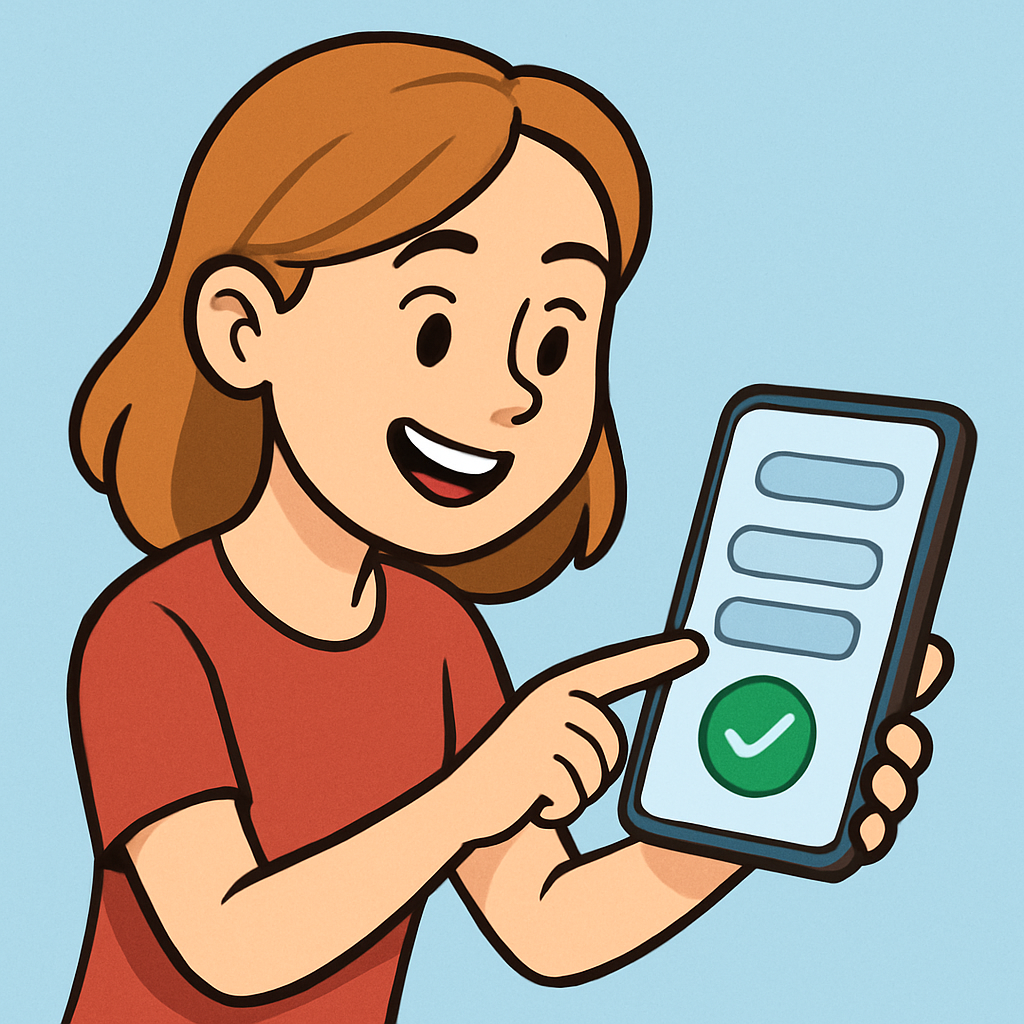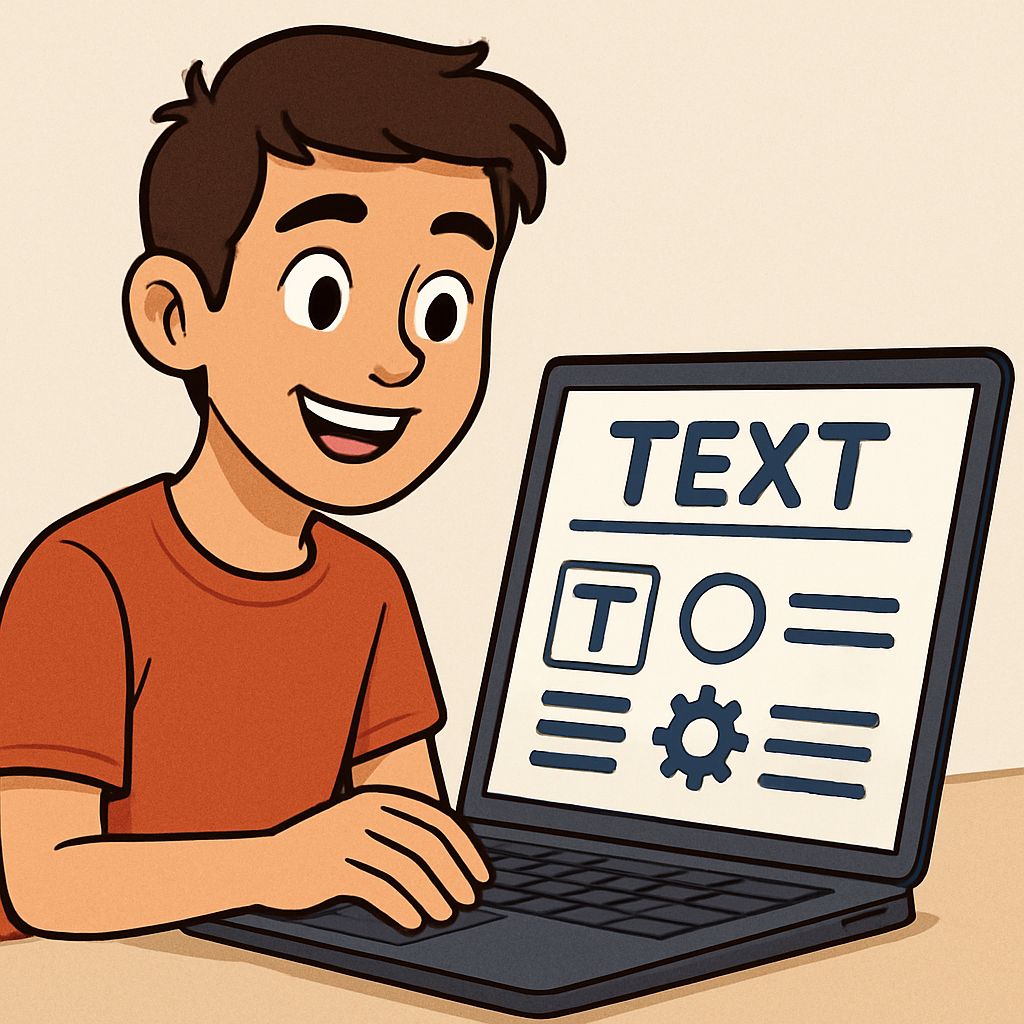In this lesson, you will explore how technology can be designed to be inclusive and accessible for everyone, including those with special needs. By the end, you'll understand key concepts in user-centred design and how to evaluate and improve digital interfaces.
Here's what you'll be doing:
 User Interface (UI) refers to the visual and interactive elements of a system, such as a website, app, or device, that allow users to interact with it. It includes buttons, menus, icons, and layouts that users see and touch. Good UI design focuses on making these elements clear, attractive, and easy to use, ensuring users can navigate and complete tasks without confusion. For example, a smartphone app with large, colourful buttons and simple swipe gestures provides an intuitive UI that feels natural and responsive.
User Interface (UI) refers to the visual and interactive elements of a system, such as a website, app, or device, that allow users to interact with it. It includes buttons, menus, icons, and layouts that users see and touch. Good UI design focuses on making these elements clear, attractive, and easy to use, ensuring users can navigate and complete tasks without confusion. For example, a smartphone app with large, colourful buttons and simple swipe gestures provides an intuitive UI that feels natural and responsive.
Factors contributing to usability include responsive layouts, consistent colour schemes, and interactive feedback like button animations. These elements enhance UI by creating a visually appealing and functional experience for users.
Reflect: Think of a website or app you've used. How does it apply (or fail to apply) good UI practices, such as clear buttons or consistent layouts?
Spend about 5 minutes on this task. Jot down your thoughts in a notebook or digital document.
 User Experience (UX) refers to how a person feels when interacting with a system, such as a website, app, or device. It encompasses the overall satisfaction, ease, and enjoyment derived from using the system. UX focuses on making interactions enjoyable, efficient, and satisfying by considering the user's needs, emotions, and ease of use, aiming to create positive experiences that encourage repeated use and loyalty.
User Experience (UX) refers to how a person feels when interacting with a system, such as a website, app, or device. It encompasses the overall satisfaction, ease, and enjoyment derived from using the system. UX focuses on making interactions enjoyable, efficient, and satisfying by considering the user's needs, emotions, and ease of use, aiming to create positive experiences that encourage repeated use and loyalty.
For example, a well-designed app loads quickly, has intuitive buttons, and provides helpful feedback, making users feel in control and happy. Poor UX, on the other hand, can lead to frustration, abandonment, and negative perceptions of the product or brand.
Factors contributing to usability include clear navigation, consistent design, and accessibility features like high contrast modes. These elements enhance UX by making interfaces more user-friendly for everyone, ensuring that diverse users, including those with disabilities, can interact effectively and achieve their goals without unnecessary hurdles.
Reflect: Think of a website or app you've used. How does it apply (or fail to apply) good UX practices, such as intuitive navigation or quick loading times?
Spend about 5 minutes on this task. Jot down your thoughts in a notebook or digital document.
 Universal Design is the process of creating products, environments, and systems that are usable by all people, regardless of age, ability, or other factors, without the need for special adaptations. In computing, this means designing user interfaces and experiences that are accessible and inclusive for everyone, including those with disabilities. It promotes equity and usability, ensuring that technology benefits a wide range of users.
Universal Design is the process of creating products, environments, and systems that are usable by all people, regardless of age, ability, or other factors, without the need for special adaptations. In computing, this means designing user interfaces and experiences that are accessible and inclusive for everyone, including those with disabilities. It promotes equity and usability, ensuring that technology benefits a wide range of users.
The seven principles of Universal Design are:
In user interfaces, these principles contribute to usability by incorporating features like resizable text, keyboard navigation, and high-contrast modes, making technology more accessible and user-friendly.
Reflect: Think of a website or app you've used. How does it apply (or fail to apply) one or more principles of Universal Design, such as flexibility in use or perceptible information?
Spend about 5 minutes on this task. Jot down your thoughts in a notebook or digital document.
 Adaptive technology refers to hardware or software that helps people with special needs interact with computers and the world. It plays a crucial role in promoting independence, education, and employment for those with disabilities.
Adaptive technology refers to hardware or software that helps people with special needs interact with computers and the world. It plays a crucial role in promoting independence, education, and employment for those with disabilities.
Examples include:
These technologies transform lives by enabling access to information, communication, and tasks that might otherwise be impossible. For instance, a student with dyslexia might use text-to-speech to read textbooks, improving learning outcomes.
Reflect: Think of an adaptive technology you've encountered or heard about. How does it help users with special needs, and what impact does it have on their daily lives?
Spend about 5 minutes on this task. Jot down your thoughts in a notebook or digital document.